
 |
||||
Christopher Barry, Steven Foster |
||||
M.U. Confocal Facility |
||||
. |
| .
|
|||||||||
|
|
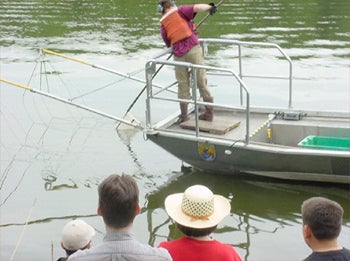 |
|||||||
Fig. 2 Electrofishing from boat |
|||||||||
Abstract: ...The regular occurrence of endocrine disrupting chemicals in US surface waters, as well as their observed effects in the native wildlife has only been described in the literature in the last 15 years. While the full range of their effects and the mechanisms through which they act are still under investigation, one remarkable endpoint for the detection of endocrine disruption in males is the so called intersex condition, or presence of oocytes in the testes of normally heterosexual fish, also known as ovotestis. In this study, we both present data on the occurrence of the intersex condition in smallmouth bass of the Ohio River basin, as well as investigate a method for the quantification of the severity of intersex. Bass were sampled in 2004 and 2005 from the Kanawha and Muskingum river basins, both tributaries of the Ohio River, as well as the Back Fork of the Elk, Top Gauley, and West Fork of the Greenbrier River, 3 relatively undisturbed reference sites in West Virginia. Both boat-mounted and backpack electrofishing equipment were used for sampling, depending on the size of the river or stream. Fish were sexed via visual inspection of the gonads upon dissection and the testes of males were excised in the field for histological processing. Testes were formalin fixed, paraffin embedded, and stained with hematoxylin and eosin (H&E). Using a method established in European Flounder (Platichthys flesus) by Bateman et al.(Env Tox & Chem, 2004), the extent of the intersex condition was first quantified using the ovotestis severity index, or OSI. The proportion of gonadal tissue comprised of oocytes was then quantified using digital image analysis with ImageJ software. Examination via application of the OSI has revealed cases of intersex in as many as 100% of fish sampled at one site. All other sites sampled, with the exception of one, showed some fraction of smallmouth with intersex. Even the reference sites showed some occurrence of intersex, though in significantly lower numbers. The investigation of the suitability of digital image analysis using ImageJ shows a correlation between severity analysis by the OSI and severity analysis by area calculations in ImageJ. Overall, the occurrence of this intersex condition is much more prevalent than should be expected and must be taken as an alarming warning sign of needed revision of current water quality management policies. |
|||||||||
| . | |||||||||
|
|
|
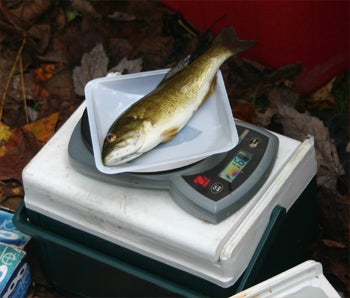 |
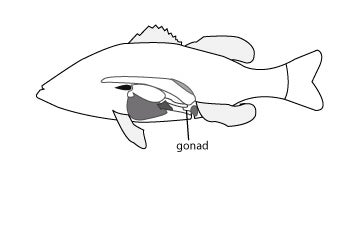 Fig. 4 Location of fish gonads relative to other internal anatomy Fig. 4 Location of fish gonads relative to other internal anatomy
|
|||||
Fig. 3 Taking fish mass data in the field |
|||||||||
| Introduction: |
|||||||||
. |
|||||||||
 |
|||||||||
Fig. 5 Occurrence of intersex at each site |
|||||||||
| Methods: | |||||||||
|
|||||||||
Sample Collection |
Sectioning and Staining |
||||||||
| ◊ Fish were caught by electrofishing either from boat for non-wadable streams or using backpack electrofishing units for wadable streams. ◊ Fish were either euthanized with Finquel MS-222 (99.5% pure tricaine methanesulfonate ) or sacrificed by severing the spinal cord. ◊ Fish were dissected to determine sex and male gonads excised in the field. ◊ Testes were stored in formalin for transportation to the lab |
◊ sectioning: 10µm with an International Equipment Co. rotary microtome. ◊ lift sections from water bath with slide |
||||||||
|
|
||||||||
Paraffin Embedding |
Mounting |
||||||||
| ◊ tissue wash: 2 x 5 min. in 0.2M sodium phosphate buffer, pH 7.4. ◊ dehydration series of ethanols: ... 50% -> 70% -> 90% -> 100% -> 100% (10 min. ea.) ◊ clearing: 2 x 20 min. in Citrisolv© xylene substitute. ◊ infiltration: 2 x 1 hr incubation in hot paraffin ◊ embedding: move to fresh hot paraffin and allow to cool. |
◊ dehydration series: (for compatibility with non-aqueous medium) ...50% -> 70% -> 90% -> 100% -> Citrisolv © 1 min. ea. -> 5 min. ◊ mounting: ...+ ~200 µL Fisher Permount © ...+ coverslip |
||||||||
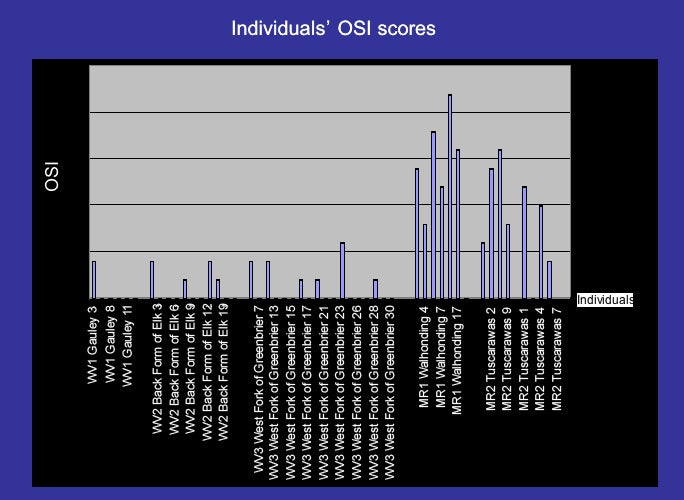 |
|||||||||
Fig. 6 Individuals’ OSI scores |
|||||||||
| . | |||||||||
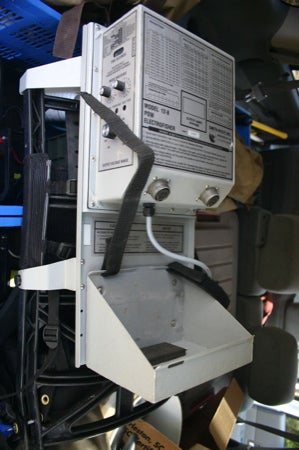 |
Results: ...With the exception of one site on the Kanawha River, all sites sampled were found to have at least one fish with intersex, including reference sites. However, the number of cases, and severity of intersex were significantly higher at impacted sites. (see figs. 5 & 6) The microscopic histological analysis was successfully demonstrated at Marshall using the fish from East Lynn. Furthermore, the intersex analysis via area calculations in Image J yielded very similar results to intersex severity analysis using the OSI. |
||||||||
Fig 7 Backpack electrofishing unit |
|||||||||
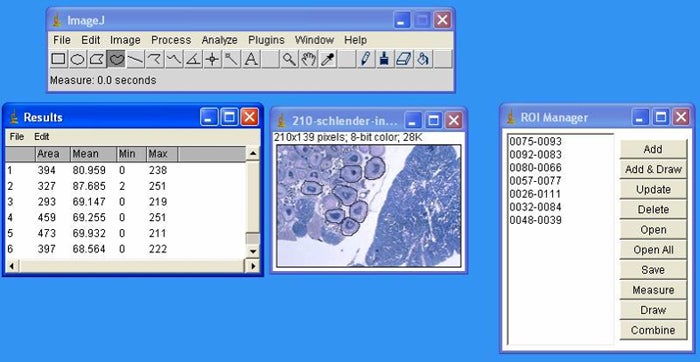 |
|||||||||
Fig. 8 Intersex severity analysis in ImageJ |
|||||||||
 |
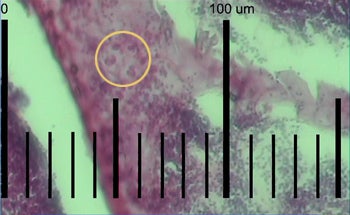 |
||||||||
Fig. 9 10x image of ovotestis |
Fig. 10 40x image of ovotestis |
||||||||
Conclusion: |
|||||||||
References |
Acknowledgements |
||||||||
| 1) Bateman, K.S., Stentiford, G.D., Feist, S.W. A ranking system for the evaluation of intersex condition in European flounder (Platichthys flesus). Environmental Toxicology and Chemistry 23:12. 2004 p.2831-2836. 2) Katherine E. Liney, Susan Jobling, Jan A. Shears, Peter Simpson, and Charles R. Tyler. Assessing the Sensitivity of Different Life Stages for Sexual Disruption in Roach (Rutilus rutilus) Exposed to Effluents from Wastewater Treatment Works. Environmental Health Perspectives 113:10. 2005 p.1299-1307. 3) Kolpin, D.W., Furlong, E.T., Meyer, M.T., Thurman, E.M., Zaugg, S.D., Barber, L.B., Buxton, H.T. Pharmaceuticals, Hormones, and Other Organic Wastewater Contaminants in U.S. Streams, 1999-2000: A National Reconnaissance. Environmental Science and Technology 36. 2002 p.1202-1211. 4) Johnson, M.J. Hall, L.C. The estrogenicity of selected herbicides and adjuvants endocrine disruption capabilities of surflan and oryzalin. A report prepared for the division of environmental analysis, California Dept. of Transportation Interagency Agreement Nos. 43A0014 AND 43A0073 5) Peck, M., Gibson, R.W., Kortenkamp, A., Hill, E.M. Sediments are major sinks of steroidal estrogens in two united kingdom rivers. Environmental Toxicology and Chemistry 23:04. 2003 p. 945-952. 6) Schmitt, C.J., V.S. Blazer, G.M. Dethloff, D.E. Tillitt, T.S. Gross, W.L. Bryant Jr., L.R. DeWeese, S.B. Smith, R.W. Goede, T.M. Bartish, and T.J. Kubiak. Biomonitoring of Environmental Status and Trends (BEST) Program: Field Procedures for Assessing the Exposure of Fish to Environmental Contaminants. U.S. Geological Survey, Biological Resources Division, Columbia, (MO): Information and Technology Report USGS/BRD-1999-0007. iv+35pp. + appendices. Columbia, MO. 1999. |
Steven Foster, limnologist
USACE, Huntington District - funding, equipment, expertise West Virginia Dept. of Environmental Protection Watershed Assessment Section - equipment, manpower US Geological Survey Fish Health Branch of Leetown Science Center Dr. Vickie Blazer’s lab - expertise, lab facilities, consultation David Neff – help with microscopy and histology topics Dr. Somerville – thesis advisor - conception of topic, funding, consultation NASA Research Grant – for partial funding |
||||||||
| |
|||||||||
|
|||||||||